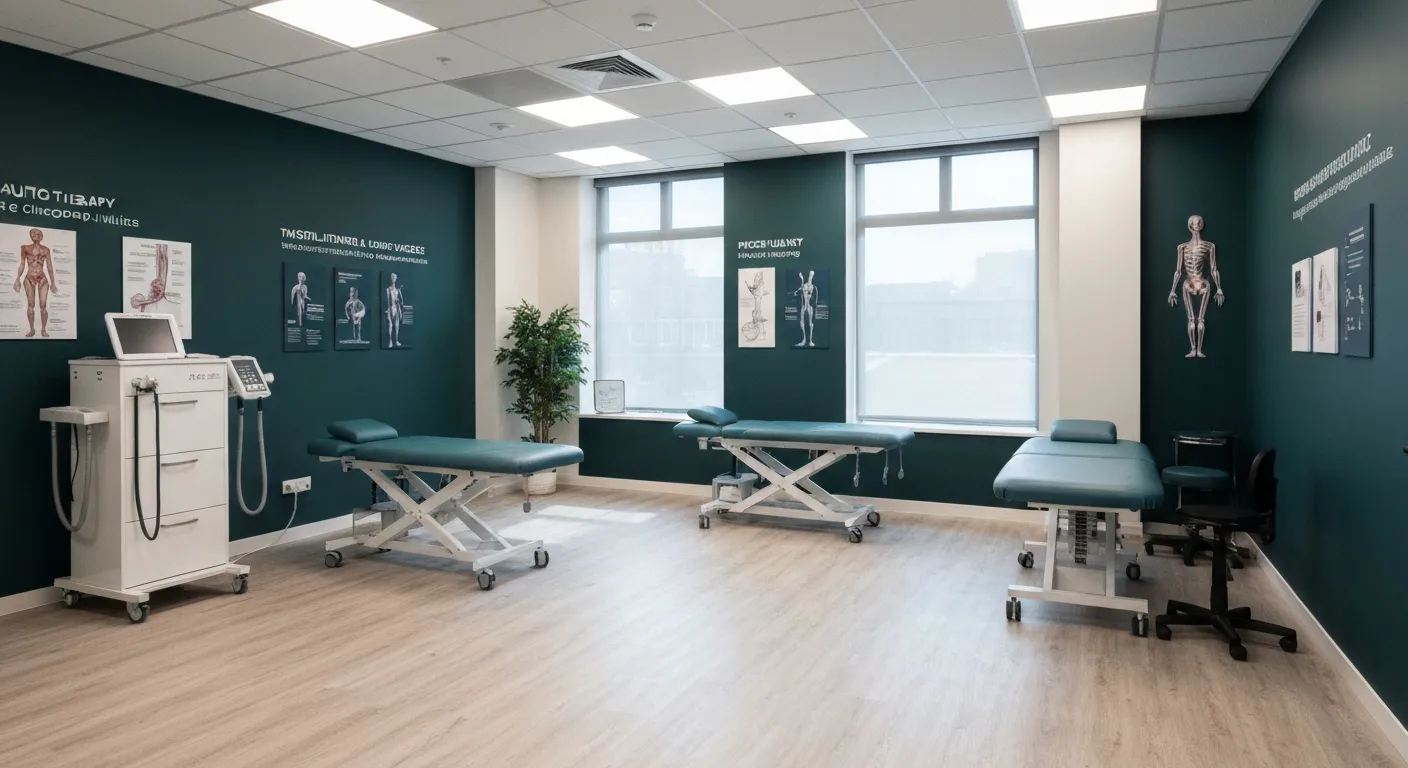Why Chiropractic Treatments Are Effective for Managing Back Pain
October 14, 2025
10 min

Understanding the Growing Appeal of Chiropractic Care
In the landscape of back pain management, chiropractic treatments have emerged as a highly effective, non-invasive option. With millions affected worldwide, the desire for safe, drug-free solutions has propelled chiropractic care into mainstream acceptance. This article explores why chiropractic treatments work, their safety profile, economic benefits, and how they compare to other therapies, while emphasizing journalistic standards of integrity, accuracy, and engaging storytelling to provide readers with a clear understanding of this therapeutic approach.
The Clinical Effectiveness of Chiropractic Spinal Manipulation

How effective is spinal manipulative therapy (SMT)?
Spinal manipulative therapy (SMT), primarily performed by chiropractors, is considered an effective treatment for non-specific and chronic spine pain—including neck and low back pain. Research shows SMT can reduce pain and disability, often providing short-term relief comparable to other therapies.
How does SMT compare to other treatments?
Studies indicate that SMT is as effective as recommended standard medical care, physical therapy, or exercise for managing spine pain. For neck pain, thoracic SMT may offer greater benefits than other manual techniques like mobilization. For low back pain, SMT and physical therapy yield similar results in improving function and reducing discomfort.
Do clinical guidelines recommend SMT?
Almost all clinical practice guidelines endorse SMT as a frontline treatment for spine pain, frequently recommending it alongside exercise and patient education. This widespread support reflects a conservative approach favoring SMT over invasive or pharmacological interventions due to safety and cost-effectiveness.
Is SMT combined with exercise beneficial?
Yes, evidence suggests combining SMT with exercise leads to better outcomes for neck pain. Multimodal treatment plans that include both SMT and tailored exercise programs are favored for enhanced pain relief and improved functional recovery.
What about SMT's short-term effects?
SMT has been shown to provide significant short-term pain relief and disability improvement for acute and chronic neck and low back pain sufferers. Although evidence quality varies, SMT remains a key non-invasive option in managing spine pain symptoms effectively.
Journalistic techniques that make such clinical articles engaging
Journalists make clinical research articles compelling by providing clear explanations of treatment benefits, comparing results across therapies, and citing authoritative guidelines. Including patient-focused outcomes and concise data presentation also enhances reader engagement and understanding.
How Chiropractic Care Relieves Back Pain: Mechanisms and Benefits

Manual Spinal Adjustments
Chiropractic care primarily involves manual spinal adjustments, also known as spinal manipulative therapy (SMT). Licensed chiropractors apply controlled, high-velocity, low-amplitude thrusts to specific spinal joints. This process aims to realign vertebrae, improve spinal motion, and reduce joint restrictions. Adjustments often produce a popping or cracking sound caused by gas release from the joints (Chiropractic adjustment overview).
Pain Relief Mechanisms
The adjustments help to reduce muscle tightness and alleviate pressure on nerves, which can decrease inflammation and nerve irritation. By modifying nervous system function and interrupting pain signals, spinal manipulation promotes the body's natural healing processes. This drug-free, non-invasive approach contributes to effective pain relief in both acute and chronic back conditions (Chiropractic care for pain relief, Chiropractic care and musculoskeletal pain relief).
Improved Joint Function and Mobility
Through manual adjustments, chiropractors improve spinal joint mobility, allowing increased range of motion. Restoring proper alignment reduces biomechanical stress and tightness in muscles and ligaments surrounding the spine. This facilitates better posture and functional movement, which are critical for long-term spine health and prevention of recurrent pain episodes (Spinal manipulation benefits, Chiropractic care for back pain overview).
Post-Treatment Effects and Safety
Most patients tolerate chiropractic adjustments well, experiencing only minor short-term effects such as transient soreness, headaches, or fatigue that usually resolve within 24-48 hours. Serious complications are very rare and mainly occur when treatments are administered by untrained practitioners. Licensed chiropractors carefully screen patients to ensure safety and suitability for care (Chiropractic adjustment safety, Risks and complications of spinal manipulation).
Benefits for Chronic and Acute Pain
Evidence supports chiropractic spinal manipulation as an effective treatment for non-specific low back pain and neck pain, with benefits comparable to physical therapy or standard medical care. It is often recommended as a first-line conservative therapy. Patients report improved pain relief, function, and quality of life, alongside reduced reliance on pain medications, including opioids (Clinical effectiveness of chiropractic spinal manipulative therapy, Chiropractic care reducing opioid use).
Journalistic Considerations in Reporting Chiropractic Care
Journalists covering chiropractic efficacy must balance speedy reporting with accuracy, especially when medical information is complex. Verifying the nuances of clinical evidence around chiropractic care before publication is essential to avoid spreading misinformation and to provide trustworthy health guidance (Clinical guidelines and research considerations for SMT).
Comparative Advantages of Chiropractic Care Over Other Treatments

Cost-effectiveness vs Physical Therapy
Chiropractic care is a cost-effective alternative to physical therapy for low back pain. Studies show average treatment costs for chiropractic care are lower, around $410 compared to $459 for physical therapy over six months. Chiropractors tend to deliver slightly better or comparable patient outcomes, making the care economically advantageous (chiropractic care vs physical therapy for low back pain).
Opioid Use Reduction
Research demonstrates that patients who opt for chiropractic care initially have significantly lower odds—up to 90%—of using opioids for low back pain. This highlights chiropractic care’s role in reducing opioid dependence by offering effective non-drug pain management (Clinical effectiveness of chiropractic services.
Non-invasive Nature
Chiropractic treatment involves manual spinal manipulation and related therapies, which are non-invasive and drug-free. It is recommended as a frontline conservative option before considering injections or surgery, minimizing risks associated with invasive procedures (Management of chronic back pain, Back pain diagnosis).
Patient Satisfaction and Outcomes
Patients often report high satisfaction levels and improved pain relief and function after chiropractic care. Both pragmatic clinical settings and controlled trials indicate chiropractic care effectively reduces pain and disability for neck and low back pain (Clinical effectiveness of chiropractic spinal manipulative therapy, Chiropractic care for pain relief).
Multimodal Approaches Including Exercise
Chiropractic care is frequently combined with exercise therapy and patient education, aligning with clinical guidelines promoting multimodal treatment. This integrated approach enhances treatment effectiveness and long-term back health (Clinical effectiveness of chiropractic spinal manipulation, Chiropractic care for back pain.
How can journalists ensure the information they publish is well-researched and factual?
Journalists ensure accuracy by cross-referencing clinical trials, expert guidelines, and systematic reviews from reputable medical and academic sources. This careful verification upholds evidence-based reporting on chiropractic benefits (Evidence-Based Practice in Chiropractic Care.
Safety Considerations and Patient Suitability for Chiropractic Treatment

What is the risk profile of chiropractic care?
Chiropractic treatment generally has a low risk profile. Serious complications are very rare when care is provided by trained and licensed practitioners. The most commonly reported issues are minor and temporary, such as mild soreness, headaches, or fatigue lasting up to 24 hours post-treatment (Chiropractic adjustment overview.
How common are serious adverse effects?
Serious adverse effects like herniated disks, nerve compression, or stroke, especially following neck manipulation, are extremely uncommon. These risks are much lower compared to many invasive medical procedures and often linked to inadequate practitioner screening or technique (Risks of chiropractic adjustments.
What screening protocols are in place?
Before initiating chiropractic care, practitioners conduct thorough patient evaluations including taking health history, physical exam, and occasionally imaging tests. This helps identify if chiropractic treatment is appropriate or if referral to other healthcare providers is needed (chiropractic health history and exam.
Which conditions contraindicate chiropractic treatment?
Certain conditions exclude patients from chiropractic adjustments, such as severe osteoporosis, bone fractures, bone tumors, severe arthritis, infections, or symptoms indicating serious nerve involvement (e.g., numbness, tingling, weakness). Patients with increased stroke risk or acute neck pain with neurological deficits should avoid spinal manipulation (Conditions contraindicating chiropractic care.
What minor side effects may patients experience?
Temporary side effects can include mild headache, localized pain, tiredness, or soreness after manipulation. These usually resolve within a couple of days without intervention (Minor side effects of adjustments.
Journalists cover this topic by balancing the safety benefits of chiropractic care against these minor risks and occasional rare serious events. They rely on expert consensus and clinical guidelines to provide a comprehensive and impartial view without sensationalism (Clinical effectiveness of chiropractic spinal manipulative therapy.
Integrating Chiropractic Care into Holistic Back Pain Management
Combining Chiropractic Care with Exercise and Lifestyle Changes
Chiropractic care is most effective when integrated with exercise and lifestyle modifications. Clinical guidelines recommend spinal manipulative therapy (SMT) alongside targeted exercises to improve muscle strength, flexibility, and posture for patients with neck and low back pain. Chiropractors often provide advice on ergonomic adjustments, core strengthening, and stretching routines to support spinal health and reduce recurrence of pain. Maintaining a healthy weight and avoiding activities that worsen symptoms are also emphasized to enhance treatment outcomes. For additional self-care tips and lifestyle modifications, see 8 tips to ease your back pain.
Role in Reducing Surgery and Medication Reliance
Research supports chiropractic care as a non-invasive alternative that can lower the need for surgical interventions and opioid prescriptions. Patients receiving chiropractic manipulation for low back pain have shown significantly reduced rates of opioid use and surgery. By effectively managing pain and improving function, chiropractic care supports safer pain relief options and helps avoid the risks associated with medications and invasive procedures. For an overview of non-surgical treatment options, see 7 ways to treat chronic back pain without surgery.
Multidisciplinary Approaches
Chiropractic care is increasingly integrated into multidisciplinary treatment plans involving physical therapists, physicians, and other healthcare providers. This collaborative approach includes spinal manipulation, rehabilitative exercises, lifestyle counseling, and manual therapies, enhancing overall patient outcomes. Such models provide comprehensive management for chronic back pain, addressing biomechanical, neurological, and psychosocial factors. See Understanding chiropractic care and chronic pain management for further insights.
Patient Education and Self-Care Recommendations
A core component of chiropractic care is educating patients about their condition and empowering them with self-care strategies. Chiropractors instruct patients on proper posture, body mechanics, and safe movement to prevent exacerbations. They also recommend lifestyle adjustments, including stress management and activity modification, promoting active participation in recovery and long-term spinal health. For more on patient education and self-care in chiropractic, refer to Chiropractic care for back pain: Patient instructions and Back pain self-care tips.
Addressing Journalistic Integrity and Ethics
This article section maintains journalistic integrity by presenting evidence-based information accurately and impartially. It highlights the benefits and limitations of chiropractic care within broader holistic strategies, avoids sensational claims, and encourages informed patient choices through transparent reporting of clinical evidence and guidelines. For a detailed review of the clinical effectiveness and challenges in chiropractic research, see Clinical effectiveness of chiropractic spinal manipulative therapy.
Patient Experiences and Public Perception of Chiropractic Care
How satisfied are patients with chiropractic care?
Most patients report high satisfaction after receiving chiropractic care for back pain and neck pain. Studies show many feel their symptoms improve significantly, noting better pain management, enhanced mobility, and a reduction in medication use including opioids. For instance, clinical trials indicate more than half of neck pain patients experience substantial pain relief after 12 weeks of chiropractic care.
What do clinical studies say about chiropractic outcomes?
Large-scale studies involving diverse populations confirm clinical effectiveness of chiropractic spinal manipulative therapy in reducing pain intensity and disability. Results often show chiropractic care can produce outcomes comparable or better than physical therapy or usual medical treatments. Importantly, research highlights fewer adverse effects and fewer surgeries among patients who start care with a chiropractor (research on patient selection for SMT outcomes.
How does chiropractic care affect quality of life and function?
By realigning the spine and addressing musculoskeletal issues, chiropractic therapy improves posture, flexibility, and physical function. Patients frequently report improved daily activities and enhanced well-being. Reduction of nerve pressure and muscle tension contributes to sustained relief and improved overall health.
What are the current public trends in utilizing chiropractic services?
Chiropractic care has become increasingly popular, with about 11% of US adults using it in 2022, up from 7.4% two decades ago. This reflects growing acceptance as a non-invasive, drug-free alternative to traditional pain management techniques (chiropractic care for pain relief.
Why is it important to choose qualified chiropractors?
Although generally safe, chiropractic adjustments carry rare risks such as herniated disks or stroke, especially after neck manipulation. Licensed practitioners with doctoral training reduce these risks through proper screening and technique. Patient outcomes and safety are optimized when care is delivered by trained professionals (chiropractic safety).
Incorporating patient testimonials, statistical evidence, and addressing common questions helps create relatable and trustworthy content that resonates with readers.
Chiropractic Care: A Proven Path to Managing Back Pain
Chiropractic treatments, centered on spinal manipulation and supported by robust clinical research, offer a safe and effective option for managing back pain. With benefits ranging from pain relief and improved mobility to reducing reliance on medications and invasive procedures, chiropractic care holds a valued place within holistic back pain management. Ensuring that treatment is delivered by licensed professionals and tailored to individual patient needs is essential for maximizing outcomes. Through balanced reporting and thorough research, understanding the role of chiropractic care can empower patients and healthcare providers alike to make informed decisions that promote long-term spinal health and wellbeing.
Recent articles

Sciatica Relief Through Targeted Spinal Decompression

Integrating Physiotherapy with Chiropractic Treatments for Better Results

Testimonials That Demonstrate the Benefits of Chiropractic Care

The Power of Corrective Exercises in Pain Management

A Step-by-Step Guide to Your Initial Chiropractic Consultation

9 Nutritional Tips to Enhance Your Chiropractic Wellness Journey

Patient Experiences: How Chiropractic Care Changed Their Lives

Lifestyle Recommendations to Keep Your Spine in Top Shape

Effective Corrective Exercises for Long-Term Pain Relief

Back Pain Benefits: What Chiropractic Care Can Do for You

Spinal Decompression Techniques for Effective Sciatica Relief

Top Nutritional Counseling Tips for Enhanced Wellness

6 Lifestyle Habits That Boost Spine Health Daily

Discover Holistic and Non-Surgical Pain Relief Solutions

Exploring Holistic and Non-Surgical Treatment Options for Pain

The Role of Physiotherapy in Enhancing Chiropractic Care Outcomes

Complementing Chiropractic Care with Physiotherapy: What You Need to Know

What to Expect During Your First Chiropractic Visit

Simple Lifestyle Adjustments to Maintain a Healthy Spine

Personalized Nutritional Counseling for Improved Health Outcomes

Exploring Non-Surgical Treatments for Spine-Related Conditions

An Introduction to Spinal Decompression for Sciatica Patients

Transformative Success Stories: Patient Experiences with Chiropractic Treatments

Why Chiropractic Care Is Essential for Back Pain Relief

Addressing Underlying Causes Versus Symptom Management in Pain Care

The Role of Nutrition in Enhancing Chiropractic Treatment Effectiveness

Sciatica Treatment Options: Is Spinal Decompression Right for You?

Lifestyle Tips to Maintain a Healthy Spine and Prevent Back Issues

The Synergy Between Physiotherapy and Chiropractic Treatments

What Happens During Your Initial Chiropractic Consultation

Effective Corrective Exercises for Sustainable Pain Management

Taking a Root Cause Approach to Chronic Pain Management

Holistic Pain Management Techniques Without Surgery

How Patient Success Stories Validate Chiropractic Care Benefits

Spinal Decompression: Innovative Treatment for Sciatic Nerve Pain

Spinal Decompression Therapy: A Non-Invasive Approach to Sciatica Relief

Exploring Holistic Approaches Beyond Surgery for Pain Relief

Practical Lifestyle Advice to Support a Healthy Spine Every Day

Corrective Exercise Routines Designed for Long-Term Pain Prevention

Real Patient Stories: Overcoming Chronic Pain with Chiropractic Care

Lifestyle Changes That Promote a Healthy Spine and Prevent Injury

How Addressing the Root Cause of Pain Leads to Lasting Relief

Non-Surgical Holistic Therapies to Manage Chronic Pain Effectively

Nutritional Counseling's Impact on Physical Health and Healing

Benefits of Regular Chiropractic Care for a Stronger Back

Your First Chiropractic Visit: What to Expect and How to Prepare

Patient Experiences: How Chiropractic Care Transformed Their Lives

Exploring Holistic, Non-Surgical Options for Pain Management

Combining Physiotherapy with Chiropractic Treatments for Enhanced Recovery

Holistic Treatments That Offer Alternatives to Surgery for Pain Relief

Corrective Exercise Strategies for Long-Term Spine Health

How Physiotherapy Complements Chiropractic Adjustments for Better Outcomes

First-Time Chiropractic Visitors: What You Should Know

Understanding the Importance of Treating Pain at Its Source

Adopting Lifestyle Changes to Support Your Spine's Wellness

Utilizing Physiotherapy to Enhance Chiropractic Treatment Outcomes

The Key Advantages of Chiropractic Care for Back Pain Sufferers

Why Focusing on Root Causes Improves Pain Treatment Success

Corrective Exercises That Promote Lasting Pain Relief and Mobility

Sciatica Relief Through Targeted Spinal Decompression Techniques

Preparing for Your First Chiropractic Appointment with Confidence

Healthy Lifestyle Habits for Maintaining Spinal Alignment

Success Stories Highlighting Chiropractic's Role in Pain Recovery

Top Benefits of Chiropractic Care for Chronic Back Pain

Nutrition Tips to Boost Your Overall Wellness and Recovery

How Chiropractic Care Alleviates Back Pain Naturally

How Nutritional Counseling Supports Overall Wellness and Spine Health

Step-by-Step Guide to Your First Visit with a Chiropractor

Using Nutrition to Support Chiropractic and Overall Wellness

Integrating Physiotherapy in Your Chiropractic Healing Journey

How Physiotherapy Complements Chiropractic Adjustments for Faster Healing

Lifestyle Tips for Maintaining a Healthy Spine and Preventing Back Pain

Heartwarming Patient Testimonials Highlighting Chiropractic Success

How Proper Nutrition Supports Chiropractic and Physiotherapy Treatments

Combining Physiotherapy and Chiropractic Treatments for Optimal Recovery

Why Chiropractic Treatments Are Effective for Managing Back Pain

Choosing a Chiropractor: Tips for Finding a Trusted Provider

Integrating Physiotherapy and Chiropractic: Benefits and What to Expect

How Tailored Corrective Exercises Can Aid in Pain Management

Chiropractic Care: A Proven Solution for Alleviating Back Pain

What to Expect at Your First Chiropractic Visit: A Comprehensive Guide

The Importance of Root Cause Analysis in Effective Pain Management

The Role of Corrective Exercises in Sustaining Pain-Free Living

Combining Chiropractic and Physiotherapy for Comprehensive Pain Relief

How Addressing Underlying Causes Improves Pain Treatment Effectiveness

Maintaining Spinal Health Through Lifestyle Changes and Preventive Care

Understanding the Benefits of Chiropractic Adjustments for Back Pain Sufferers

Spinal Decompression Therapy: A New Hope for Sciatica Relief

Lifestyle Recommendations to Support a Healthy Spine and Reduce Pain

Choosing the Right Chiropractor: Key Factors to Consider Before Your First Appointment

Non-Invasive Treatment Alternatives: A Holistic Approach to Pain Relief

Corrective Exercises to Support Long-Term Relief from Chronic Pain

Exploring Non-Surgical Approaches to Spine Health and Wellness

Tips for Daily Habits That Keep Your Spine Strong

Success Stories: How Chiropractic Treatments Changed Lives

Why Focusing on the Root Cause of Pain Leads to Better Outcomes

Nutritional Counseling and Its Impact on Overall Wellness and Recovery

Patient Testimonials That Showcase the Power of Chiropractic Care

Preparing for Your First Chiropractic Appointment: What You Need to Know

